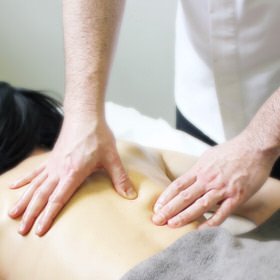
Osteoarthritis is a medical term used to describe the changes that take place in the joints of the body where the cartilage or protective lubricating services wear down. Other terms used to describe osteoarthritis are: wear and tear or degenerative changes. Although osteoarthritis is associated with ageing it also occurs faster in joints which have been significantly injured. In this situation the mechanics of the joint have been disrupted and the movement of the joint surfaces are altered. This increases the rate at which the wear and tear occurs.
Another factor that can contribute to osteoarthritis is person’s occupation. Some jobs involving heavy repetitive manual work can put increased stress on the joints. Being overweight does not cause osteoarthritis directly but the increased weight through the joints increases the stress through the cartilage. Being overweight is usually associated with not exercising enough and therefore the joints are restricted by poor flexibility and the muscles supporting the joints have poor strength. Usually it is a combination of the above factors that have caused the problem.
The extent that arthritis affects an individual is variable and an X-ray cannot predict this. An X-ray can show the level of wear and tear but is a still picture and does not indicate whether the joint moves and functions well. This can be likened to judging a cars performance based on a photo. It does not show us that the engine steering or gear box actually works. As we age it is normal to see some wear and tear on an x-ray especially in the joints which take our weight such as the hips, knees and the spine. Therefore not all problems and pain should be attributed to osteoarthritis and it can often be a red herring.
Can you predict the weather with osteoarthritis? The research so far suggests there is no significant correlation with worsening symptoms and weather changes. However, we do know that with cold weather our muscles tighten up, our threshold for pain lowers and our circulation changes. This may increase our perception of pain.
If you have been diagnosed with osteoarthritis your pain may be from structures that have changed as a result of the arthritis. It is not uncommon to find individuals with very tight muscles and capsular tissue that increases the forces going through a joint. In this situation specific stretches and joint manipulations can be provided that reduce the pain significantly.
My advice for anyone with a painful arthritic condition is to get assessed by a specialist experienced in diagnosing and treating this problem. Although we can’t cure osteoarthritis the symptoms can be reduced with a combination of treatments using medical and complimentary methods.
Andrew Deeming BSc (1st class Hons) Physiotherapy, SRP, MCSP.
He works at Shine On the Green and you can find out more about him and his professional background on his website below.



